Music is the use of pleasing notes and harmonies…
In todays world through the internet we have the advantage of being exposed to many different talented people. I found this amazing video of a model maker on facebook. While the model work is amazing and worthy of it’s own recognition. What grabbed me was the music that the model’s movements were synchronized to. The Late Brother Leonard Cohen’s “Hallelujah”. Please take a listen before proceeding.
I found myself unable to sleep at night and the words of this haunting melody echoing through my mind. The next day I was compelled to research the meaning behind his lyrics. Here’s what I found:
This text is copied directly from a Rolling Stone Feature which you can read from it’s source here.
I did not know Bro. Cohen to be a traveling man until after I researched this. You can find a snippet from an interview at the bottom of this article where he mentions being a good Mason and a google search can find many masonic references.
How Leonard Cohen’s ‘Hallelujah’ Brilliantly Mingled Sex, Religion
Read story behind legendary artist’s most famous song, excerpted from Alan Light’s 2012 book ‘The Holy or the Broken’
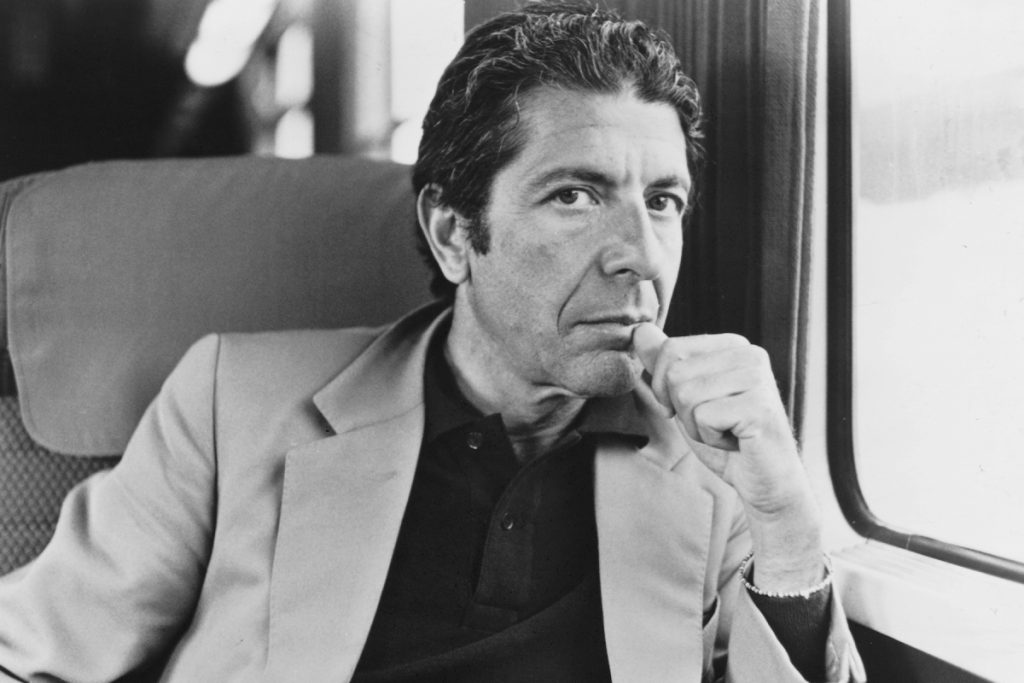
Leonard Cohen’s career had reached a low point when he wrote “Hallelujah.” It was 1984, and he had been out of the spotlight for quite a long time. His 1977 LP, Death of a Ladies’ Man, a collaboration with Phil Spector, was a commercial and critical disappointment, and his next album Recent Songs fared no better. When Cohen submitted the songs for his subsequent LP, Various Positions, to Columbia, label execs didn’t hear “Hallelujah,” the opening song of Side Two, as anything special. They didn’t even want to release the album, though it eventually came out in Europe in 1984 and America the following year.
It took a few years for “Hallelujah” to emerge as a classic. Bob Dylan was one of the first to recognize its brilliance, playing it at a couple of shows in 1988. The Velvet Underground’s John Cale tackled it on the piano for a 1991 Cohen tribute disc, and three years later, Jeff Buckley took inspiration from that rendition and covered it on his 1994 album, Grace. It was that version that eventually created a huge cult around the song, and it’s since been covered by everybody from Bono to Bon Jovi. It’s far and away Leonard Cohen’s most famous composition, even though many people don’t even realize that he wrote it.
Alan Light dove deep into the history of the song for his book, The Holy or the Broken: Leonard Cohen, Jeff Buckley, and the Unlikely Ascent of ‘Hallelujah‘ by Alan Light, copyright 2012 by Alan Light, Published by Atria, an imprint of Simon and Schuster. This excerpt was originally published in December 2012.
****
In June 1984, Cohen and Lissauer recorded the album that would become Various Positions in New York’s Quadrasonic Sound studios. In the album’s arrangements, for the first time on Cohen’s recordings, synthesizers were prominent; they would come to define his sound more and more in the years to come. A group of musicians from Tulsa provided the backbone of the arrangements. Sid McGinnis – who joined the band at Late Night with David Letterman that same year and has remained with the show ever since, in addition to recording with the likes of Bob Dylan, David Bowie, and Dire Straits – provided additional guitar parts.
Jennifer Warnes, who had sung backup with Cohen on previous albums and tours, was brought further into the spotlight as a featured vocalist, a counterpoint to the limited parameters of Cohen’s voice. Hawaiian-born Anjani Thomas was one of the backup singers on these sessions; she would go on to become Cohen’s longtime companion, and he produced an album of her singing his songs, Blue Alert, in 2006.
Lissauer, a Yale graduate who has gone on to a successful career scoring films, beamed when he spoke of these sessions that took place almost thirty years earlier. Seated in the larger of the two studio rooms he operates from his thirty-five-acre farm about an hour north of Manhattan, he described working on Various Positions as pure pleasure. “I’ve never had a more rewarding experience,” he said. “It was so much fun; we had a great time. Leonard and I got along so well it’s almost scary. There were no roadblocks, no disasters; it was great start to finish – it was high art, it was just thrilling.”
The songs included several of Cohen’s most lasting compositions. The selections that ultimately opened and closed the album, “Dance Me to the End of Love” and “If It Be Your Will,” stand among his best-loved work.
Midway through the sessions – Lissauer can’t remember the precise sequence, but it wasn’t near the beginning or the end – Cohen brought in “Hallelujah” to record. Whatever torment he’d been going through with the song’s lyrics over the previous months and years, he showed no sign of confusion or indecision in the studio. “I think it was as it was,” said the producer. “There was no ‘Should we do this verse?’ – I don’t think there was even a question of the order of verses, any ‘Which should come first?’ And had he had a question about it, I think he would’ve resolved it himself.
“He’s not one to share his struggles,” Lissauer continued. “If he wasn’t up to recording, if he was still working on something, then we just wouldn’t go in. But he’d never go in and act out the tormented, struggling artist.”
Leanne Ungar, who engineered Various Positions and has remained part of Cohen’s production team ever since, said that there was a pragmatic reason he would not have been experimenting with lyrics during the recording. “He wouldn’t bring extra verses to the studio because of time pressure,” she said. “The meter is running there.” It seems that the breakthrough in Cohen’s editing – the vision that allowed him to bring the eighty written verses down to the four that he ultimately recorded – was reaching a decision about how much to foreground the religious element of the song. “It had references to the Bible in it, although these references became more and more remote as the song went from the beginning to the end,” he once said. “Finally I understood that it was not necessary to refer to the Bible anymore. And I rewrote this song; this is the ‘secular’ ‘Hallelujah.’ “
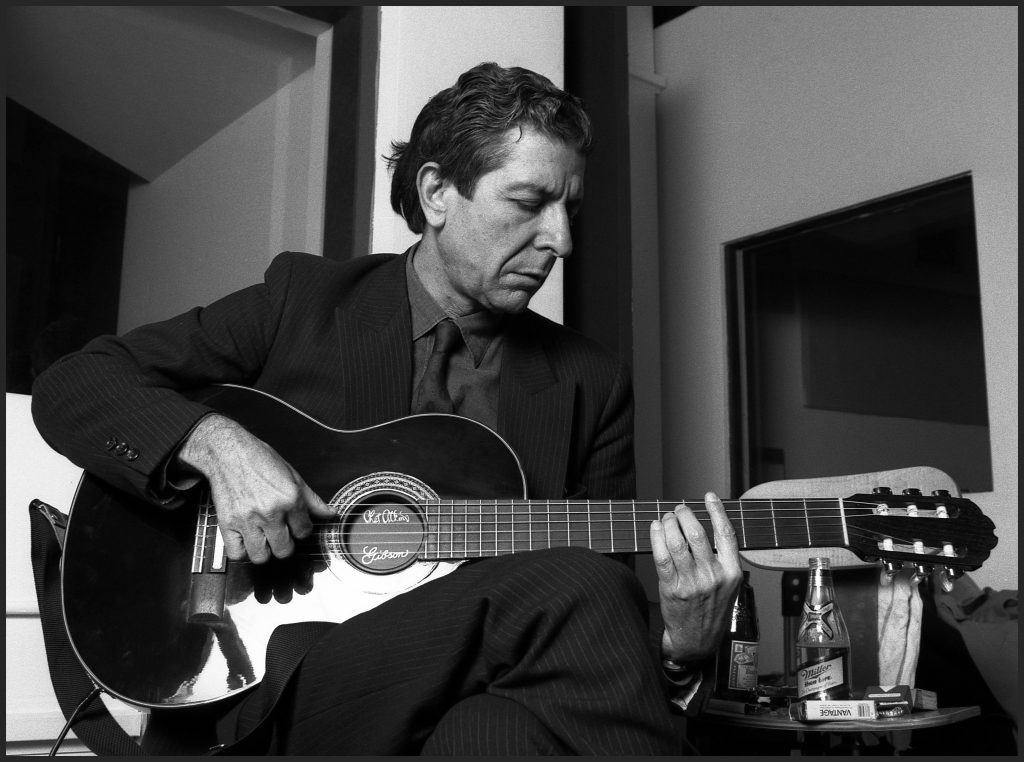
“Hallelujah” as it exists on Various Positions is both opaque and direct. Each verse ends with the word that gives the song its title, which is then repeated four times, giving the song its signature prayer-like incantation. The word hallelujah has slightly different implications in the Old and New Testaments. In the Hebrew Bible, it is a compound word, from hallelu, meaning “to praise joyously,” and yah, a shortened form of the unspoken name of God. So this “hallelujah” is an active imperative, an instruction to the listener or congregation to sing tribute to the Lord.
In the Christian tradition, “hallelujah” is a word of praise rather than a direction to offer praise – which became the more common colloquial use of the word as an expression of joy or relief, a synonym for “Praise the Lord,” rather than a prompting to action. The most dramatic use of “hallelujah” in the New Testament is as the keynote of the song sung by the great multitude in heaven in Revelation, celebrating God’s triumph over the Whore of Babylon.
Cohen’s song begins with an image of the Bible’s musically identified King David, recounting the heroic harpist’s “secret chord,” with its special spiritual power (“And it came to pass, when the evil spirit from God was upon Saul, that David took a harp, and played with his hand: so Saul was refreshed, and was well, and the evil spirit departed from him” – 1 Samuel 16:23). It was his musicianship that first earned David a spot in the royal court, the first step toward his rise to power and uniting the Jewish people.
“As a student of the sound, I understood the resonances of his incantation and invocation of David,” said Bono, who added that he immediately responded to the “vaingloriousness and hubris” of the lyric. “I’ve thought a lot about David in my life. He was a harp player, and the first God heckler – as well as shouting praises to God, he was also shouting admonishment. ‘Why hast thou forsaken me?’ That’s the beginning of the blues.”
But this first verse almost instantly undercuts its own solemnity; after offering such an inspiring image in the opening lines, Cohen remembers whom he’s speaking to, and reminds his listener that “you don’t really care for music, do you?”
“One of the funny things about ‘Hallelujah,’ ” said Bill Flanagan, “is that it’s got this profound opening couplet about King David, and then immediately it has this Woody Allen–type line of, ‘You don’t really care for music, do you?’ I remember it striking me the first time I heard the song as being really funny in a Philip Roth, exasperated kind of way – ‘I built this beautiful thing, but the girl only cares about the guy with a nice car.’ “
Cohen then describes, quite literally, the harmonic progression of the verse: “It goes like this: the fourth, the fifth / the minor fall, the major lift.” This is an explanation of the song’s structure (the basic chord progression of most pop and blues songs goes from the “one” chord, the root, up three steps to the “four,” then up another to the “five,” and then resolves back to the “one”), followed by a reference to the conventional contrast between a major (happy) key and a minor (sad) key. He ends the first verse with “the baffled king composing Hallelujah!” – a comment on the unknowable nature of artistic creation, or of romantic love, or both. In the song’s earliest moments, he has placed us in a time of ancient legend, and peeled back the spiritual power of music and art to reveal the concrete components, reducing even literal musical royalty to the role of simple craftsman.
The second verse of “Hallelujah” shifts to the second person – “Your faith was strong but you needed proof.” Apparently the narrator is now addressing the character who was described in the first verse, since the next lines invoke another incident in the David story, when the king discovers and is tempted by Bathsheba. (“And it came to pass in an eveningtide, that David arose from off his bed, and walked upon the roof of the king’s house: and from the roof he saw a woman washing herself; and the woman was very beautiful to look upon” – 2 Samuel 11:2.)
In a July 2011 service at St. Paul’s Presbyterian Church in Prince Albert, Saskatchewan, the reading of this story was accompanied by a performance of “Hallelujah.” The Reverend Dr. R. M. A. “Sandy” Scott delivered a sermon with his explication of the David story and its usage in the song.
“The story of David and Bathsheba is about the abuse of power in the name of lust, which leads to murder, intrigue, and brokenness,” said Reverend Scott. He recounted that until this point, David had been a brave and gifted leader, but that he now “began to believe his own propaganda – he did what critics predicted, he began to take what he wanted.”
Reverend Scott calls the choice of the word baffled to describe this David “an obvious understatement on Cohen’s part. David is God’s chosen one, the righteous king who would rule Israel as God’s servant. The great King David becomes no more than a baffled king when he starts to live for himself.
“But even after the drama, the grasping, conniving, sinful King David is still Israel’s greatest poet, warrior and hope,” Scott continued. “There is so much brokenness in David’s life, only God can redeem and reconcile this complicated personality. That is why the baffled and wounded David lifts up to God a painful hallelujah.”
Following the David and Bathsheba reference, the sexuality of the lyrics is drawn further forward and then reinforced in an image of torture and lust taken from the story of Samson and Delilah – “She tied you to a kitchen chair / she broke your throne, she cut your hair” – before resolving with a vision of sexual release: “and from your lips she drew the Hallelujah!” Both biblical heroes are brought down to earth, and risk surrendering their authority, because of the allure of forbidden love. Even for larger-than-life figures and leaders of nations, the greatest physical pleasure can lead to disaster.
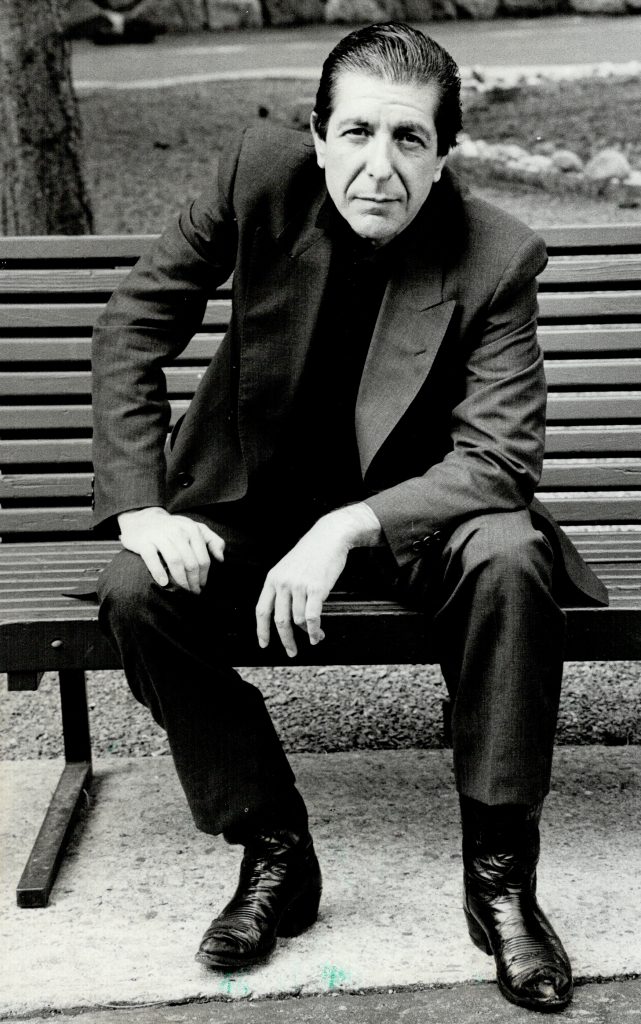
“The power of David and the strength of Samson are cut away; the two are stripped of their facile certainties, and their promising lives topple into the dust,” wrote Reverend Thomas G. Casey, S.J., a professor of philosophy at the Pontifical Gregorian University, of these first two verses. “The man who composed songs of praise with such aplomb and the man whose strength was the envy of all now find themselves in a stark and barren place.”
Lisle Dalton, an associate professor of religious studies at Hartwick College, noted the many levels on which Cohen’s linking of David and Samson works. “Both are heroes that are undone by misbegotten relationships with women. Both are adulterers. Both are poets – Samson breaks into verse right after smiting the Philistines. Both repent and seek divine favor after their transgressions.
“I don’t know a lot about Cohen’s personal life,” Dalton continued, “but he seems to be blending these two figures together with, we presume, some of his own experiences. There’s no ‘kitchen chair’ in the Bible! There’s a biblical irony that highlights the tendency of even the most heroic characters to suffer a reversal of fortunes, even destruction, because they cannot overcome their sinful natures. The related tendency, and the moral message, is for the character to seek some kind of atonement.”
In the third verse of “Hallelujah,” Cohen’s deadpan wit returns, offering a rebuttal to the religious challenge presented in the previous lines. “You say I took the Name in vain,” he sings. “I don’t even know the name.” He then builds to the song’s central premise – the value, even the necessity of the song of praise in the face of confusion, doubt, or dread. “There’s a blaze of light in every word; / it doesn’t matter which you heard, / the holy, or the broken Hallelujah!”
“A blaze of light in every word.” That’s an amazing line. Every word, holy or broken – this is the fulcrum of the song as Cohen first wrote it. Like our forefathers, and the Bible heroes who formed the foundation of Western ethics and principles, we will be hurt, tested, and challenged. Love will break our hearts, music will offer solace that we may or may not hear, we will be faced with joy and with pain. But Cohen is telling us, without resorting to sentimentality, not to surrender to despair or nihilism. Critics may have fixated on the gloom and doom of his lyrics, but this is his offering of hope and perseverance in the face of a cruel world. Holy or broken, there is still hallelujah.
Finally, the remarkable fourth verse drives this point home, starting with an all-too-human shrug: “I did my best; it wasn’t much.” Cohen reinforces his fallibility, his limits, but also his good intentions, singing, “I’ve told the truth, I didn’t come to fool you.”
And as he brings the song to a conclusion, Cohen shows that for a composition that has often come to be considered a signifier of sorrowful resistance, “Hallelujah” was in fact inspired by a more positive feeling. “It’s a rather joyous song,” Cohen said when Various Positions was released. “I like very much the last verse – ‘And even though it all went wrong, / I’ll stand before the Lord of Song / with nothing on my lips but Hallelujah!’ ” (While the published lyrics read “nothing on my lips,” Cohen has actually almost always sung “nothing on my tongue” in this line.) Though subsequent interpreters didn’t always retain this verse, its significance to Cohen has never waned: Decades later, when he was inducted into the Songwriters Hall of Fame, he recited this full last verse as the bulk of his acceptance speech.
“I wanted to push the Hallelujah deep into the secular world, into the ordinary world,” he once said. “The Hallelujah, the David’s Hallelujah, was still a religious song. So I wanted to indicate that Hallelujah can come out of things that have nothing to do with religion.”
“He’s rescued the word hallelujah from being just a religious word,” said the Right Reverend Nick Baines, Bishop of Croydon, in the BBC radio documentary. “We’re broken human beings, all of us, so stop pretending, and we can all use the word hallelujah because what it comes from is being open and transparent before God and the world and saying, ‘This is how it is, mate.’ “
In the New Yorker, Leon Wieseltier would refer to the song as “a wryer sort of contemporary psalm with an unforgettable chorus.” As Salman Rushdie would many years later, he also noted that “only Cohen would rhyme ‘Hallelujah’ with ‘what’s it to ya?’ ” In fact, every verse is built around the central not-quite-rhyme of “you” and “Hallelujah,” as if the pronunciation of “you” that’s necessary is a recurrent punch line built into the rhythm of the song. (“They are really false rhymes,” Cohen has said, “but they are close enough that the ear is not violated.”)
“I always picked up on at least two levels that Leonard’s lyrics worked on,” said Lissauer. “The obvious, the sexual undertones of so many of his things, and the alienation and loneliness that’s often there. Plus, he was able to find unusual ways to talk about subjects that are not unusual. ‘Hallelujah’ had this unstoppable focus to it, and I knew right away that it was a cornerstone in his career.”
Though almost everyone immediately concentrates on Cohen’s lyrics, of course we wouldn’t still be talking about “Hallelujah” without its simple yet unforgettable melody. It sways, gentle but propulsive, a barely perceptible waltz rhythm adding complexity to a singsongy lilt. “I might have contributed a little bit in that department,” said Lissauer with a grin. “You can hear that it’s not like a lot of things Leonard’s ever done. He had a little help with the chords and the direction of the melody – we had worked together before and gotten comfortable doing that. But it’s his song, I’ve always made that clear. And when we started to get the voicings and the chords and the melody, then it became blessed.”
For some of the inheritors of “Hallelujah,” it is explicitly the melody that speaks most strongly. Jake Shimabukuro is a young, Hawaiian-born ukulele virtuoso. He has built a huge online following through such mind-blowing, fleet-fingered performances as solo uke arrangements of “Bohemian Rhapsody” and “While My Guitar Gently Weeps”; Guitar Player magazine called him “the Jimi Hendrix of the ukulele.” But one of the highlights of his live show, and one of his more popular YouTube clips, is a simple, direct instrumental rendition of “Hallelujah.”
“To me, it’s not about the lyrics at all,” said Shimabukuro. “I really think that it has a lot to do with the chord progression in the song. There are these very simple lines that are constantly happening . . .” and though we were seated in the restaurant of a midtown Manhattan hotel, he had to stop to get his ukulele out of its case and demonstrate.
As he ran through the song’s chords, he said, “What I like about it is it picks me up. It’s very uplifting, and I think it’s the way that the melody moves, the way that the chords move. This is the line that made me want to cover this song on ukulele” – he played the melody for the second half of the verse, like the lines “It goes like this: the fourth, the fifth / the minor fall, the major lift; / the baffled king composing Hallelujah!” – “that ascending line just does something to me internally that makes me feel good. You’re just playing the scale going up, that’s all it is, but there’s something about that combination of notes . . .”
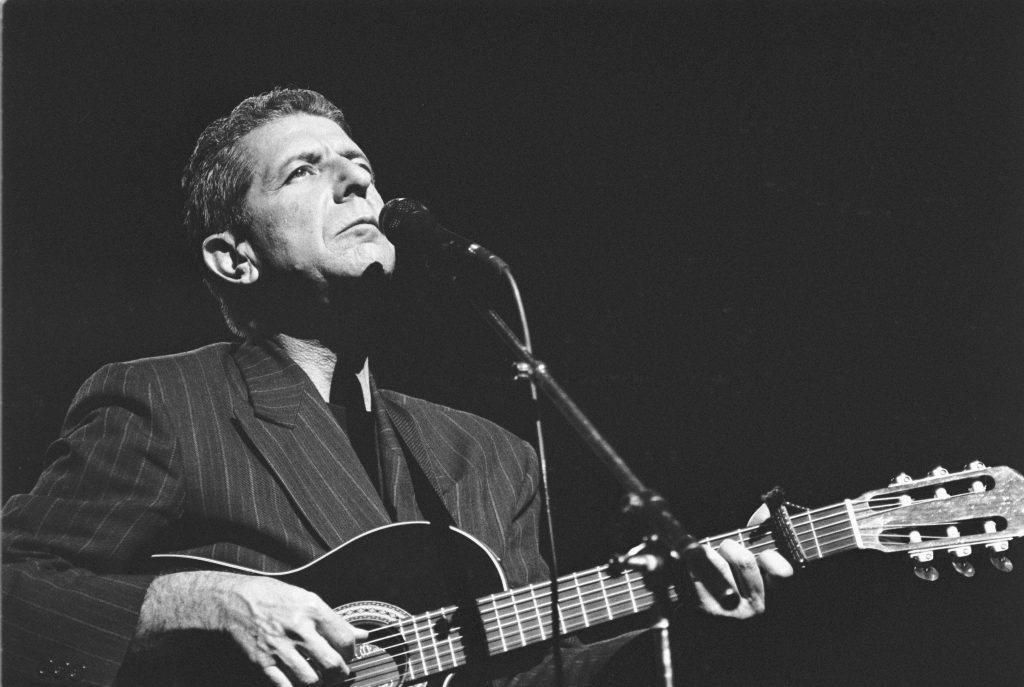
“The way the melody is structured is quite genius,” said David Miller of the popular classical crossover group Il Divo. “It builds, it lifts, then there’s always the one word coming back down. It’s almost like sex – it builds, it builds, there’s that moment, and then the afterglow. To go on that journey, the whole thing taken as an experience, is wonderful.”
As for the sound of Cohen’s “Hallelujah” recording, producer Lissauer had a clear vision of his own. He had written the arrangement and the orchestration, and those didn’t change after they got into the studio. “It was effortless to record; it almost recorded itself,” he said. “The great records usually do. The ones that you have to go and beat to death and get clever and do this and that, somehow they just don’t have that flow.”
Though the song potentially lent itself to a grand, anthemic treatment, and a note on the actual score indicates that the musicians were to perform the song in a gospel style, the producer wanted to hold it back. The drummer, Richard Crooks, played with brushes, not sticks; “we had to get strength without bashing,” Lissauer said. The producer felt that a regular bass wasn’t a big enough sound to match Cohen’s vocals, low even by his usual standards, so he crafted a synthesizer bass part.
“We didn’t want it to be huge,” said Lissauer. “I didn’t want to have a big gospel choir and strings and all that kind of stuff, so even when it got large it always had restraint to it. We decided to do this modified choir that was not gospel, not children; it was just sort of a people choir. We brought everyone in – the band came and sang, my ex-wife came and sang, I sang on it. In a way we were trying to get it to be a community choir sound, very humble.
“We didn’t go for overpowering, hit-record-making strings and key changes, or any of the things that would’ve tweaked it. It got its strength from its sincerity and its focus. We just wanted it to be sort of everyman. And I still stand by that being what it was about – it wasn’t about slickness or a gospel-y hallelujah; it was about the real hallelujah.”
While this may have seemed like a simple undertaking to the album’s producer, to Leanne Ungar, the recording engineer, this approach presented its own complications. “I think John knew just how special it was, because he took such care and extra time with every aspect of the arrangement and mix,” she said. “For me, that song was a real struggle. I remember Leonard kept asking me to put more and more reverb on his voice. I love hearing the texture of his unadorned voice and I didn’t want to do it. So I’ve never liked listening back to that recording, because I don’t like the solution I arrived at.
“I remember wanting John to replace the synthesized guitar with a real one,” she went on. “I also remember wishing we could record a large choir instead of layers of small groups. We wanted the song to keep growing bigger and bigger each chorus, but there are limitations of dynamic range on a recording, so the mix was very challenging.”
Between the choir, the ’80s-era synthesizer, and Cohen’s studied performance, the studio “Hallelujah” is certainly dramatic, though, as with many of his recordings, it flirts with cheesiness. The production hits the goals it was aiming for, but there’s a scope, a theatricality to the arrangement that puts it at a bit of a distance – as is often the case, Cohen’s work feels a bit sui generis, something that a listener either gets or doesn’t, and going back to this original recording, it’s difficult to hear what would make the song connect to a universal audience.
For all of its elements, the most striking aspect of the original “Hallelujah” recording, beyond the lyrics, is Leonard Cohen’s own vocal performance. Such lines as “I don’t even know the name” or “I did my best; it wasn’t much” are delivered with a wry, weary humor, creating a real tension between the verses and the soaring, one-word chorus. Those who know the song only through the covers that followed, many of which don’t include this section, would be surprised by the additional complexities in the original. The singing creates the sense of struggle, conflict, and resignation that then pays off in the song’s climactic, closing lines.
“This world is full of conflicts and full of things that cannot be reconciled,” Cohen has said, “but there are moments when we can transcend the dualistic system and reconcile and embrace the whole mess, and that’s what I mean by ‘Hallelujah.’ That regardless of what the impossibility of the situation is, there is a moment when you open your mouth and you throw open your arms and you embrace the thing and you just say, ‘Hallelujah! Blessed is the name.’…
“The only moment that you can live here comfortably in these absolutely irreconcilable conflicts is in this moment when you embrace it all and you say, ‘Look, I don’t understand a fucking thing at all – Hallelujah!’ That’s the only moment that we live here fully as human beings.”
They finished recording the song, and the rest of the Various Positions album. “I said, ‘Man, we’re on top of this, this is really going to do it,’ ” John Lissauer recalled. ” ‘This is gonna be the breakthrough, this record is really going to be important.’ ‘Hallelujah’ just jumped out at you, plus there was a lot of other great stuff on the album.
“And it went to Walter Yetnikoff, who was the president of CBS Records, and he said, ‘What is this? This isn’t pop music. We’re not releasing it. This is a disaster.’ “
Famous and infamous, music industry legend Yetnikoff had risen from the label’s legal department to run the company, which he did from 1975 to 1990. His career (which is documented in Fredric Dannen’s definitive study of the record business, Hit Men, and in his own freewheeling auto biography, Howling at the Moon) was marked by such earth shattering triumphs as Michael Jackson’s Thriller and Bruce Springsteen’s Born in the U.S.A., alongside a litany of accusations and allegations about his shady cohorts and abrasive style.
As Cohen recounted the story, when Yetnikoff told him that he was rejecting Various Positions, he said, “Leonard, we know you’re great, but we don’t know if you’re any good.”
Lissauer suggests that perhaps the executives at Columbia (a division of CBS; soon to become part of the Sony Corporation) were expecting something more pop-oriented, based on the early reports from the sessions. “The ’80s was an awful period for real, artistic singer-songwriters,” he said. “The ’70s had everything from Paul Simon’s solo stuff, James Taylor, Joni, even Randy Newman. But the ’80s was all bands and MTV, and Yetnikoff might actually have been looking for a way to weed out the Leonards of the world.”
Ungar believes that the rejection of the album was less strategic than that. “I think it was the usual reason – they didn’t hear a single.”
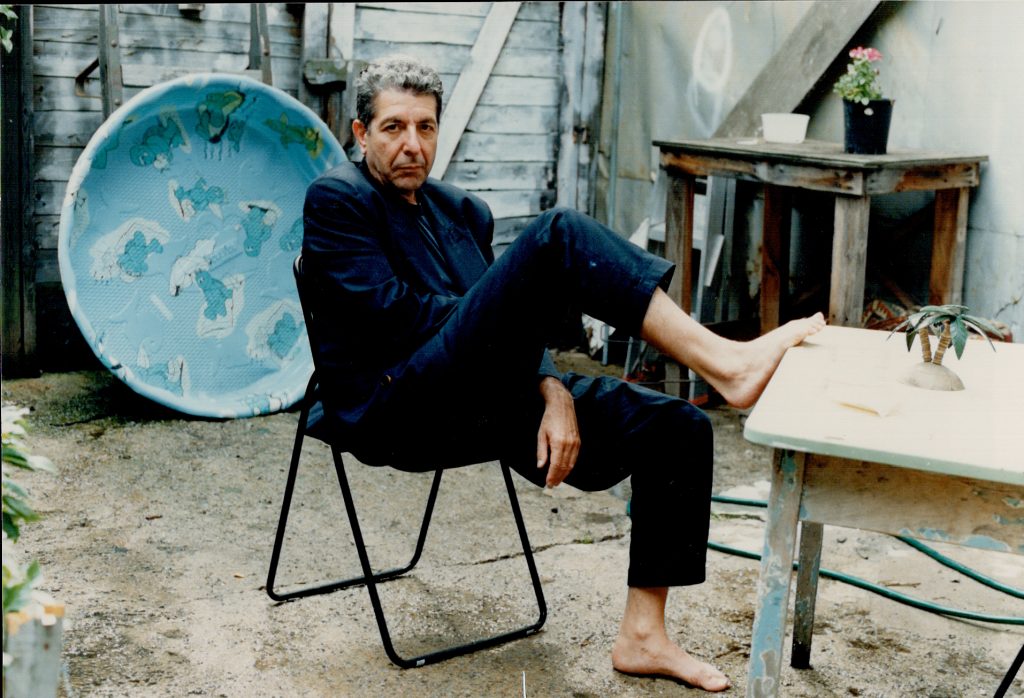
Many years later, in a 2009 interview with the Canadian Broadcasting Company about the ongoing success of “Hallelujah,” Cohen was sanguine about Columbia’s decision. “There are certain ironic and amusing sidebars,” he said, “because the record that it came from . . . Sony wouldn’t put it out, they didn’t think it was good enough. It had songs like ‘Dance Me to the End of Love,’ ‘Hallelujah,’ ‘If It Be Your Will’ – but it wasn’t considered good enough for the American market. So there’s a certain mild sense of revenge that arose in my heart.”
But without the benefit of hindsight, consider Walter Yetnikoff’s position. In September 1984, Leonard Cohen would turn fifty. Each of his last three albums – covering a time span that reached back a full decade – had sold less than its predecessor, even in the scattered countries around the world where he did have a following. He had never placed an album in the U.S. Top Ten.
Meanwhile, as Cohen was in the studio recording Various Positions, the summer of 1984 was perhaps the biggestseason in the history of the record business. Over the courseof a few months, Prince’s Purple Rain, Springsteen’s Born in the U.S.A., and Madonna’s Like a Virgin were all released,and each went on to sell over ten million copies. MichaelJackson’s game-changing Thriller was still riding high onthe charts, more than a year after it first came out. Since itslaunch in 1981, MTV had become the dominant force inpop music marketing, with a reach and an impact unlikeanything the industry had seen before, and now the world’sbiggest superstars had figured out how to take advantage ofthe exposure and opportunities that it offered.
There could be no arguing that record sales had become very big business, and were getting bigger by the day. Stakes were high. And against that backdrop, it’s not hard to imagine that a record company might have had a difficult time knowing what to do with a middle-aged artist, of an elite but very limited stature, at this precise moment in music history. It’s perhaps even more difficult to see a label executive being able to hear clearly enough to believe that the simple song with the Bible stories and the one-word chorus might go on to some success of its own. And, to be honest, while the synthesizer sounds were considered state-of-the-art in 1984, they weren’t edgy enough to win over younger listeners, and they soon sounded somewhat dated.
Various Positions was released overseas, and two months after CBS passed on it, the independent label PVC Records put it out in the U.S., at the end of 1984. (Columbia would later buy back the rights to the album when it rereleased Cohen’s catalogue on compact disc.) But still, once the album reached the public, hardly anyone seemed to notice “Hallelujah,” the first song on the LP’s second side. Don Shewey’s album review in Rolling Stone didn’t mention the song, though it noted the album’s “surprising country & western flavor” and singled out “John Lissauer’s lucid and beautiful production.”
Lissauer had never even seen that review until I sent it to him after our interview. In fact, he had no idea that Various Positions had actually been released in the U.S. until four or five years after it happened. When Cohen’s manager at the time, Marty Machat, broke the news to the producer that the record had been turned down, he said that it wasn’t worth bothering to execute their contract – and so, to this day, Lissauer has never seen a single cent in royalties for his work on “Hallelujah,” about which he seems curiously at peace. “I still survive, everything is fine,” he said, “but it would be nice to actually get royalties for an album with the most-recorded song in fifty years on it.”
The experience essentially ended Lissauer’s producing career. Baffled by the label’s response to a project that he felt so positive about, he switched gears and turned to making music for films, which he feels has all turned out for the best. But he does express regret that the outcome of the Various Positions saga effectively meant the end of his relationship with Cohen.
“Once they went out on tour and then we got word that the record was a non-record, I didn’t see him for fifteen years,” he said. “I think we were both so embarrassed. I felt horrible. I felt like I’d ruined his career.”
Excerpted from the book The Holy or the Broken: Leonard Cohen, Jeff Buckley, and the Unlikely Ascent of ‘Hallelujah’ by Alan Light with permission from Atria/Simon & Schuster, out December 4th.
This text was copied directly from a Rolling Stone Feature which you can read from it’s source here.
Brother Cohen’s masonic reference:

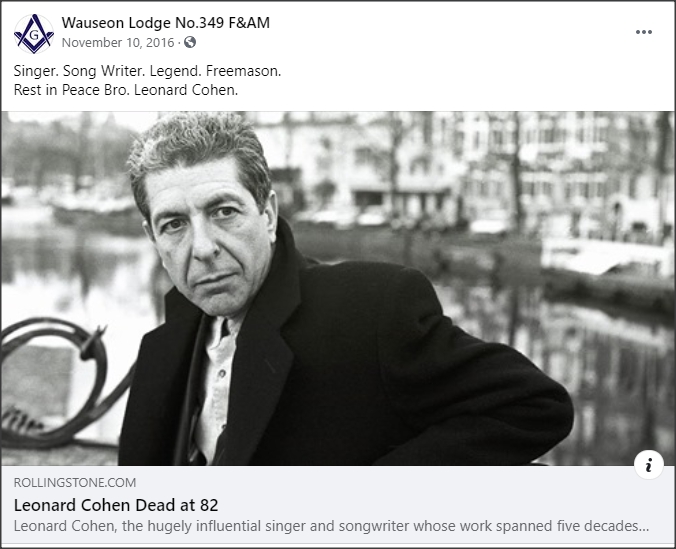
If you’ve made it this far… thank you so much for reading. I found the journey of making this song worthy of sharing and adding to the fact that he was a FreeMason only enrichens the experience.
May you take this one piece that expands the fellowcraft lecture and expand your knowledge into the 7 liberal arts and sciences.
Please feel free to leave a comment below.